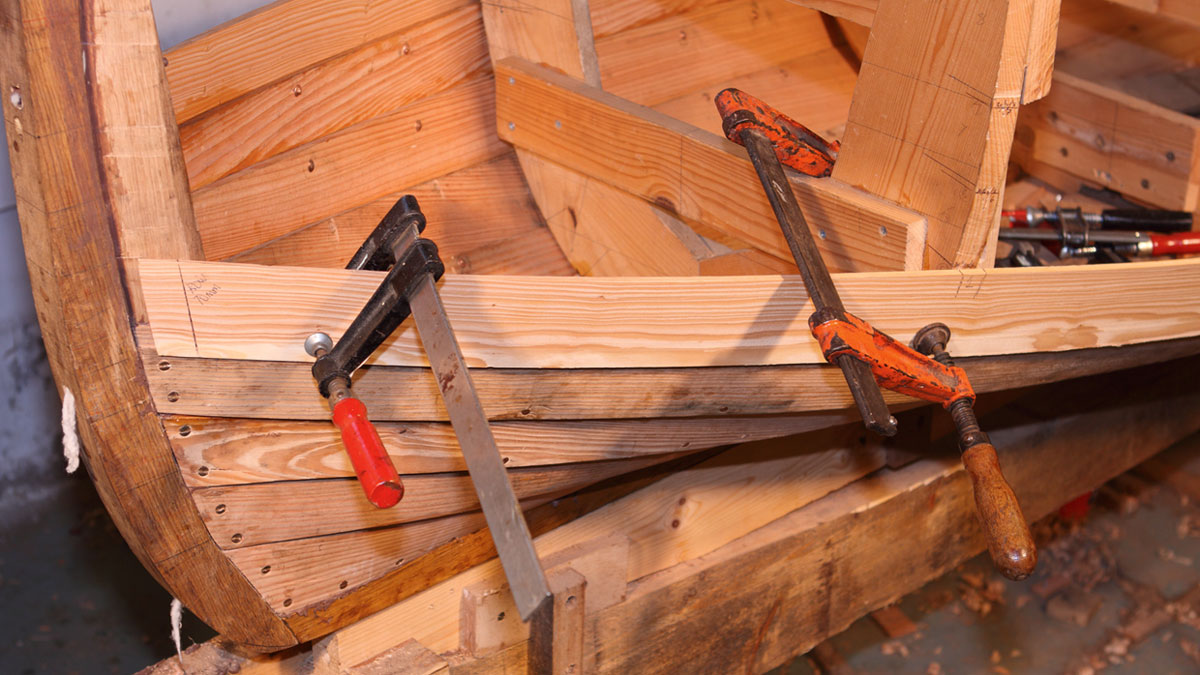Understanding Clinker Construction
The clinker construction method boasts a distinct stepped profile that has graced the seas for over a millennium. This style has primarily gained favor in the crafting of small wooden dinghies, yet it has also been utilized for larger vessels, such as the impressive Whitby motorboat and the robust Norfolk Wherries. The artistry behind clinker-building involves planks that overlap in a manner that provides both strength and flexibility for boat repairs.
The Unique Structure of Clinker-Built Boats
In a clinker-built boat, the lower edge of one plank overlaps the upper edge of the plank below, creating a seamless, protective barrier against the harsh elements. Fastened with copper nails that are clenched over roves, these planks are secured to the boat’s timbers and intersect with each other. If a plank suffers damage, the design allows for straightforward removal and replacement, making maintenance a more manageable endeavor.
Steps for Repairing Clinker-Built Boats
Repairing a clinker-built boat involves several meticulous steps. Below is a concise guide to help in this process:
Identifying the Damage
Before proceeding with repairs, it’s crucial to assess the level and type of damage to the planks. Look for signs of rot, cracks, or detachment at the seams.
Measuring and Preparing
- Utilize a spiling plank to measure the precise curvature necessary for the new plank.
- Mark the spots on the planking stock based on the dimensions of the plank to be replaced.
- Ensure the wood selected for the new plank has the right degree of curve for optimal fit.
Cutting the New Plank
The following steps help in cutting and shaping the new plank:
1. Draw a line along the edge of the spiling plank to create a guide for the cut.
2. Cut the plank using a handheld circular saw, ensuring a fair line is followed.
3. Trim the edges with a plane to achieve the desired shape.
Fitting the New Plank
To ensure a snug fit, the new plank must be securely clamped before final fastening. Here’s how:
- Clamp the new plank into position and mark any adjustments required for fitting.
- Carefully create the necessary back bevel to fit it perfectly against the adjoining plank.
- Use clamps to hold the plank in place during the fastening process. Wooden peg-style clamps are particularly useful.
Final Fastening
Once the plank is correctly aligned, the fastening process can begin:
1. Secure the planks using copper nails driven through the newly fitted plank and the underlying timber.
2. If using the reverse clinker construction method, the overlapping planks will aid in reducing resistance through water. This modification allows for improved speeds and stability.
The Advantages of Clinker Construction
The clinker construction technique not only offers ease of repair but also contributes to enhanced performance in water. The benefits include:
- Improved Hydrodynamics: The overlapping design minimizes water resistance, making the boat faster and more agile.
- Structural Integrity: The unique method provides lasting strength, allowing the boats to withstand the rigors of sailing.
Historical Context of Clinker Construction
Clinker-built vessels have played a significant role in maritime history. The evolution of boat construction techniques from robust design to lighter, flexible builds has opened up the seas for exploration and leisure. The blend of traditional craftsmanship and modern practices has kept the clinker models relevant.
Embracing the Sailing Lifestyle with GetBoat
Sailing is not just about navigating the sea; it’s about embracing a lifestyle filled with adventure and exploration. At GetBoat, we understand the essence of ocean leisure and the thrill of choosing your own path. The platform offers a diverse array of boating options, making it easy to find the perfect match for any sailing adventure—be it a cozy day at the harbor or an exciting exploration of offshore destinations. Clients are empowered to select vessels that adhere to their preferences and budgets while enjoying full transparency throughout the process.
Wrapping Up
Repairing clinker-built boats is both an art and a skill that reflects centuries of maritime tradition. With each plank adjusted and fastened, a sense of connection to the past is forged, offering a fulfilling experience for any boat enthusiast. Whether you’re planning to sail into the sunset or anchor at a picturesque beach, understanding this method can enhance your boating adventures. If planning your next trip to the sea, consider the marvel of renting a boat, as each inlet, bay, and lagoon carries its own story waiting to be uncovered through sailing. No two experiences are alike when you set sail, giving you the chance to explore the vast and beautiful ocean just like the unique aspects of local cultures and cuisines. Explore your options today. Visit GetBoat.de to find your perfect sailing companion!


